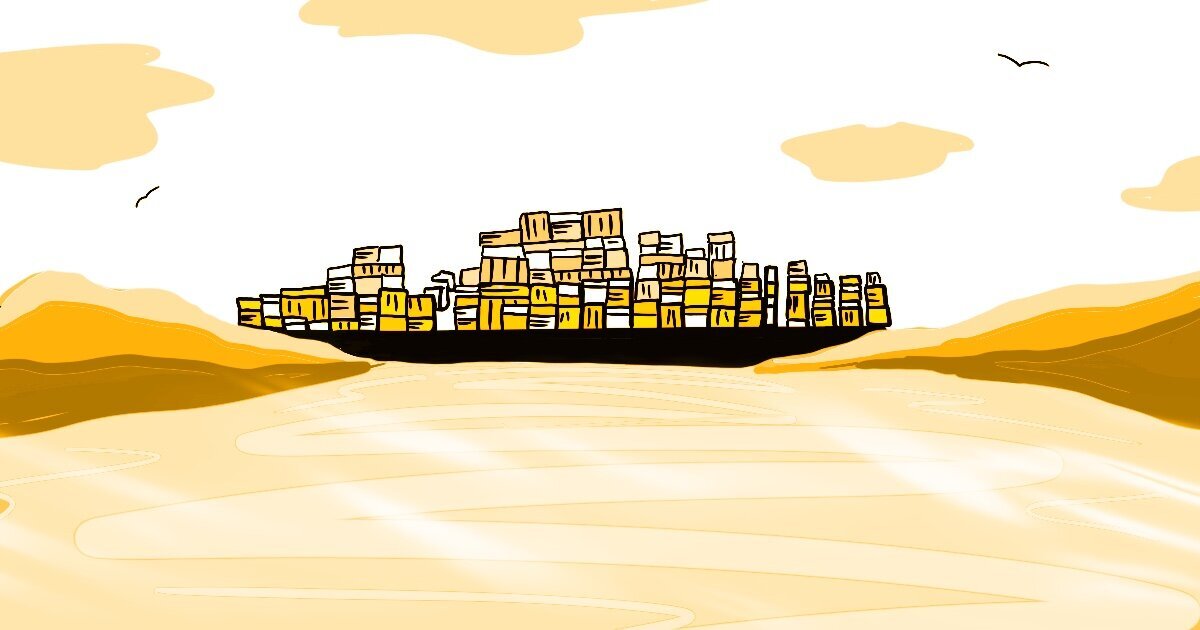The World’s Tightest Economic Channel Is Unclogged. But Are We?
Recently I was on a collaboration call with a sales leader at one of our brands. Good leader, hard-working, has worked at the intersection of sales and marketing for a long time. She built her expertise in “the funnel” an unfortunate metaphor that has permeated sales and marketing where somehow there’s this ever-tightening tube of torture that plops out buyers at the end when built correctly.
Experts in “the funnel” are very interested in a well-crafted mythology about how buyers do things in sequence. And when marketing and sales are singing from the same songbook, one perfectly produced prompt leads to another where, in the end, salespeople simply have to say, “Wouldn’t you like to buy this sno-cone in winter?” and the revenue starts pouring in.
The goal of my conversation with this business leader was to help expand perspective, primarily to get better results. I was hoping to talk about ecosystem, the interconnected framework of experiences pre and post-sale that produce not a buyer’s journey, but a client experience.
Client experience is more than just a buzz phrase, it is the understanding that our most valuable marketing and sales resource is happy, committed, long-term customers.
Back to my friend, the sales leader. She wasn’t all that interested in an ecosystem. She quickly interrupted me with, “that’s all well and good, but what exactly are you going to do to get my next ten leads.” A revelatory question followed by an explanation of the sales team’s comp structure. Having worked on full commission for nearly 10 years of my life, I understand the dilemma. But what I wasn’t willing to do was sacrifice our client’s long-term success on the altar of an outdated comp plan.
Why A Brand Ecosystem?
CROs and sales-oriented folks often start zoning out when I start talking about the power of a brand ecosystem. “We’re here to run a business. Where are the leads?”
Understanding brand ecosystem is like waking up to climate change. The realization that what we do with water affects trees, affects bugs, affects farms, affects ice caps, affects, cities, affects humans all seems so obvious once you see it. But first, you have to be willing to see it. Similarly, the decisions to buy, to apply, to click, to refer, to review, to discuss your business happens all around and they’re all connected. Everything affects everything else.
Analytics people hate this because they want single attribution.
This lead came from this activity. So let’s do more of that. As stunningly self-affirming as that metric might be, it’s also an oversimplification of reality. We may be able to track the last thing or even the last few things a client did before they booked a sales call, but even that information will misguide us.
A client could have received your blog through a DM from a colleague, which then led them to your website on their phone while they were at the airport on a random IP address. Intrigued by the blog they went to LinkedIn to look at more of your content where they got caught up by the thought leadership from your head of engineering. From there they talked further with their colleague who is your client, read your CEO’s book description on Amazon, finally signing up for your newsletter where they clicked the call-to-action at the end and booked a call.
In the world of single attribution, we would say “Goddamn, our newsletter is the bee’s knees. It produces such well-qualified leads. Let’s double the spend on the newsletter!”
And that would be a remarkably stupid idea. Because what you really need to do is continue to produce passionate clients and in-house thought leaders. Two critical factors in marketing that will never show up in a lead attribution report.
The lead, served up on a silver platter to the salesperson, is a product of a robust brand ecosystem, where the credibility of the firm is alive and well, across multiple channels. Explaining this to my sales leader friend was intended to inspire a deeper collaboration, instead what it got was us further stuck.
“No but seriously, what exactly are you going to do to get my next ten leads?”
I sighed, “We won’t change your lead magnets without talking with you first.”
In the end, all conflicts are about power, but that’s a different blog all-together.
Stuck In A Funnel (Channel) Of Our Own Making
What does all this have to do with a giant barge no longer stuck in the middle of the Suez Canal? Actually quite a bit. 150ish years ago some guys built a single-lane trench through Isthmus of Suez with the express intent of saving time and money in the business of doing trade. The result is a tiny little strip of water that connects Europe and Asia’s markets in ways that are critical to our global economy.
And in that little strip of water wedged a floating Empire State Building pushed sideways by the winds of change all while the world watched in horrified wonder. Of course, we all were mapping our pent-up pandemic emotions on that poor little ship.
Aren’t we all feeling a little wider than we want to be?
Aren’t we all feeling wedged into confined spaces, wishing to be free?
Aren’t we all subject to mockery on Twitter that we feel is undeserving? (Well, maybe not all of us.)
Regardless, the sense that commerce should be flowing more clearly, and we shouldn’t be trapped in this channel, struck a chord. And in the case of marketing, it illustrated the folly and frustration of pushing everything that matters to us through tiny little channels barely wide enough for our business aspirations.
I’m sure engineers and economists could explain to me why we still need that tiny little Suez Canal after 150 years of advancement. But what can’t be defended is when we KNOW that our customers are coming through a broad ecosystem of engagement and credibility, why do we continue to believe our best course of action is to shove them through some manufactured sales funnel?
Because it gives us the illusion of control.
Winning Is The Opposite Of Control
Over the last 10 years Google and Facebook have conspired to lead you to believe that their ecosystem is the only one that matters. You know the one: made up of clickable activities in paid ads, paid social, SEO, and SEM, emails that must comply with Gmail’s preferences. The world running through their servers, feeding the beast of their data engines, defining a flat-sided version of reality with no humans required.
They offer you, if you will worship exclusively at their altar, the illusion of control. Because control is one of the great human aspirations, they often win the argument. To be fair, only a fool would build a marketing plan without at least some consideration for SEO, paid social, and the like. But a fool of a different kind would believe those things are the only ones worth doing.
Forrester Research’s repeat study shows that the performance of design-led brands (design is by nature uncontrollable) exceed that of their counter parts by over 200%. Gartner’s buyer’s journey weaves in and around in circles and loops, looking more like a cruise ship lost in the Caribbean than a barge squeezing through a channel. The data (ironically) is demonstrably in favor of letting go of control.
The organic work of brand development: design, customer experience, community building, differentiation, and holistic strategy is the only formula capable of winning. Everything else is an ongoing chase after clicks and attribution.
In the grand ecosystem that produces overperforming brands, the temptation to believe that one tiny part can be replicated over and over and over again without consequence is one of the great lies of marketing. Particularly when the opposite is true. When you feed the whole system, each part flourishes feeding all the others. Bringing down the overall cost of customer acquisition (CAC) and increasing customer lifetime value (LTV) the two most important metrics in marketing.
What’s A Sales Leader To Do?
My sales leader friend still thinks she’s got a boat stuck in the banks. When really she’s got an ocean of opportunity being forced through a channel of her own making. What should she do to awaken to the world that is possible and free her company from the tyranny of attribution?
-
Fall in love with the customer care department. Sales and customer care are two sides of the same coin. They should work together.
-
Abandon the religion that the last thing that happens before a purchase is the most important thing. It often is the least.
-
Engage the sales team in organic activities, building their own personal brands on social, connecting with clients and prospects outside the so-called “funnel”.
-
Extend the “buyer’s journey” to the full customer lifetime experience (this will require more squiggly curves than straight lines). The more we understand the journey from stranger to advocate, the more we understand that the “funnel” is a very small part of what matters.
-
Take a course in design thinking. If you don’t know where to begin, here’s the book list from Stanford’s d.school.
Earth’s geopolitical make-up may require the whole world’s economy to run through a single channel. But your business is not so locked down. You are free. Free to build an ecosystem of self-sustaining opportunity. Free to break the religion of attribution. Free to win on your own terms.
Leaders, let’s connect if you want to learn more about how it’s done.


